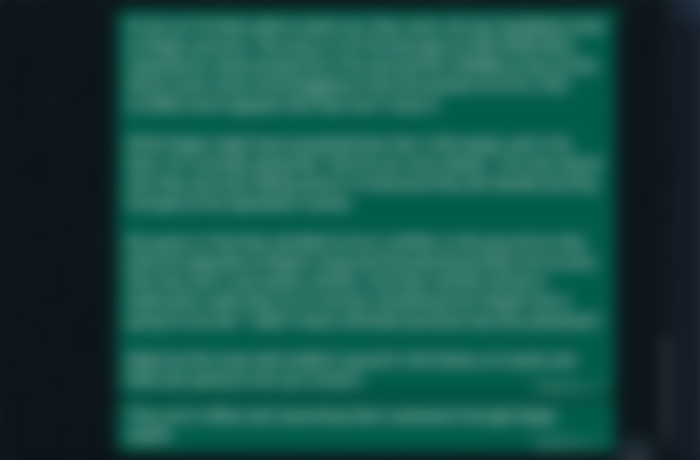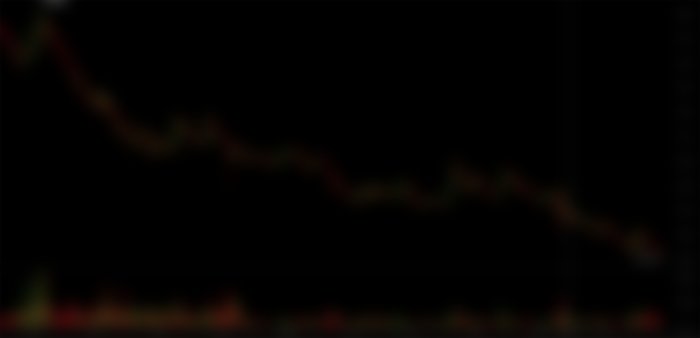The CoinFlex Chronicles: Mark Lamb Vs Roger Ver

Each cryptocurrency bull run has to come to an abrupt end with tears, sorrow, and drama overwhelming the crypto communities during the bearish cycle that follows.
This time, Terra Luna initiated the crypto descent with its stablecoin (UST) that de-pegged and collapsed, dragging down the entire market and evaporating hundreds of billions of dollars.
The contagious collapse of Terra Luna led multiple custodian services into insolvency, with Celsius pausing withdrawals and BlockFi/Nexo facing an existential threat.
Crypto Venture Capital funds like Three Arrow Capital defaulted after facing hundreds of millions of liquidations, while other funds miraculously mitigated the risk of UST stablecoin and their Luna holdings right before it collapsed and limited their exposure, minimizing their losses.
Between this negative market sentiment, worries emerged concerning the insolvency of many exchanges, and a week ago, the CoinFLEX exchange locked withdrawals, blocking access to the centralized SmartBCH bridge it controls.
On June 23rd, CoinFLEX proceeded with pausing withdrawals from the exchange, mentioning “continued uncertainty involving a counterparty”.
What preceded the withdrawals suspension and what followed is another crypto drama event that will remain in history as yet another sign that everyone should be extra cautious as the landscape slowly transitions into an even more dangerous route.

The Chronicles of CoinFLEX
CoinFLEX is a centralized exchange (CEX) offering perpetual futures with leverage options, in a similar approach to Bitmex, Binance, and more derivatives exchanges. The exchange also offers a spot market, staking options with high yields, and controls the only (centralized) bridge to smartBCH, and the access to 100,000 BCH locked in the smartBCH protocol.
Bitcoin.com is a partner of CoinFLEX since 2019, after they reached a $30 million deal that secured for the exchange access to 25 million Bitcoin.com wallets.

(source: CoinFLEX)
The exchange uses AMMs (Automated Market Makers) and delivers high APR to liquidity providers, rewards justified according to CoinFLEX by the trading fees and high volumes it generates.

Moreover, the exchange provides a varying yield to holders of the native stablecoin flexUSD (between 2-10%).
A new deal between CoinFLEX and bitcoin.com was revealed on December 2021, together with the release of a new AMM (AMM+) by CoinFLEX.

Some analysts suspected foul play concerning the high trading volumes CoinFLEX exchange was generating, claiming bots were trading free of fees and artificially increasing trading volumes. Although, a practice witnessed in most cryptocurrency exchanges for years (source, source1, source2).
CoinFLEX Ambassador Doug Polk Disappointed With The Situation
The exchange also announced in 2021 professional poker player and YouTuber Doug Polk as an ambassador of CoinFLEX. Doug Polk had previously interviewed Mark Lamb (CoinFLEX CEO) before the announcement of his sponsorship.
A rather interesting twist of events since Polk in 2017 sided with the Blockstream side (even though fees of Bitcoin were reaching astronomical levels and transactions stuck in the mempool for days) and also made several accusations against Bitcoin Cash and Roger Ver in particular.
Doug Polk recently announced his discontent on Twitter and is expected to make a new announcement on July 1st, depending on the decisions of Coinflex (source).

SmartBCH In Danger

SmartBCH is an EVM-compatible sidechain to Bitcoin Cash, an Ethereum clone currently under a decentralized PoS & PoW consensus, although also under federation with the bridge between BCH and smartBCH under the control of CoinFLEX. Centralization is a single point of failure, yet a decentralized bridge was under development and planned to be released this year.
CoinFLEX is the smartBCH participant entrusted with the smartBCH bridge and the current holder of the keys to the 100K BCH locked in the smartBCH protocol.
SmartBCH developers delayed the implementation of the SHA-Gate decentralized bridge that would add interoperability with Ethereum and proceeded with new plans for SHA-Gate V2, which will be based purely on PoS, instead of a mixed consensus (PoS & PoW) which was the original plan. So, the initial plan to launch the decentralized bridge in 2022 is now considered unlikely.
SmartBCH announced it is currently discussing a bailout plan with part of the Bitcoin Cash community. With a second Tweet, SmartBCH also warned it plans to proceed with legal action against everyone responsible for the disruption of the network.

(Source: Twitter)

Recent Events As Unfolded
June 23rd, 2022 CoinFLEX Announces Pausing of All Withdrawals

(Source)
CoinFLEX announcement of pausing withdrawals was expected. The reason, though wasn't fully described in the announcement, as the exchange only mentioned a counterparty it considered responsible or unable to repay its obligations:
"extreme market conditions and continued uncertainty involving a counterparty"
Withdrawals, though had been locked long before June, 23rd as many users of the exchange claim at the CoinFLEX telegram group.

Initially, many assumed that the CoinFLEX announcement concerned exposure to some of the rest failing centralized financial entities operating in the field (3AC, Celsius). However, this was immediately categorically denied, and hints appeared that the CoinFLEX exchange cited as a "counterparty" a known Bitcoin Cash investor.

June 28th: Bloomberg Interview with Mark Lamb
The CEO of CoinFLEX, Mark Lamb, appeared live on Bloomberg to explain the exchange thesis and provide more information concerning the exchange restructuring process.
Lamb also announced that CoinFLEX would proceed with the issuance of a debt token called "Recovery Value USD" with the ticker rvUSD, which essentially pointed to the initials of Roger Ver's name.
During the Bloomberg interview and when discussing the rvUSD token, Mark Lamb mentioned the option of using legal means against the counterparty but also expressed how he would prefer the solution of rvUSD to be accepted instead.
CoinFLEX offered this new asset (rvUSD) to accredited investors, rewarding them with a 20% APR, assuming it would help finance what CoinFLEX considers a $47 million debt obligation.

The Crypto Community Reaction to The rvUSD Announcement
Before anyone mentioned the name of Roger Ver, part of the crypto community was already puzzled by this move, with many accusing CoinFLEX of running a Ponzi Scheme:



Inside Information Leaked on Twitter
A few hours after Lamb’s interview on Bloomberg, Twitter user @FatmanTerra announced leaked information from what he claimed was a verified source who named Roger Ver as the person CoinFLEX exchange accused of not meeting a payment concerning a long position but without mentioning details.

(Source: Twitter)

Roger Ver Responds
The dramatic events peaked with Roger Ver declaring his official position and presenting different claims from what CoinFLEX had announced.

(source)
Without mentioning the CoinFLEX exchange, Roger Ver declared the rumors against him false, arguing that the counterparty is the one that owes money to him instead.
Considering there are written agreements between the two counterparties, and in this case, we can assume Roger Ver implies the counterparty is CoinFLEX, this becomes a legal matter.
Mark Lamb instantly replied (Tweeted), presenting the official side of CoinFLEX Exchange and now was officially accusing Roger Ver of defaulting on $47 million of debt:


(Source: Twitter)
Some of the users of CoinFLEX and fans of the SmartBCH chain reacted negatively to the announcement, while the conversation is ongoing on CoinFLEX and Bitcoin Cash telegram channels, Reddit, and social media.

There is a lot more in this case we don't know about, and perhaps with time, we will uncover, although, even with the current information, we can connect the dots and reach a reasonable assumption.

Crypto Community Reaction:
Quite a few highly esteemed crypto-community members are troubled by the recent events at CoinFLEX, with some suggesting foul play from the exchange's side, while there is also a side supportive of CoinFLEX that suggests Roger Ver simply defaulted on his obligations (long position liquidated).
The following crypto community members mentioned a few possible scenarios.
Checksum0 published on Bitcoin Cash telegram:


Michel de Cryptadamus expressed on Twitter concerns about dark pools for large derivatives trades, explaining how Lamb's interview on Bloomberg validated.


(source)
Bitcoin Cash haters (Blockstream maximalists) live for moments like this one where they can spill relentless hatred on the Bitcoin Cash network, and rally against Bitcoin Cash proponents, utilizing these situations to divert attention from the failures of the SoV (Store of Value) narrative.

Subreddit r/cryptocurrency is famous for censoring Bitcoin Cash-related news and information, yet not surprised at all when it promotes the same anti-BCH rhetoric the Blockstream executives (Samson Mow, Adam Back) promote by using troll factories to boost propaganda against Bitcoin Cash.

The Impact of the CoinFLEX event on the price of Bitcoin Cash (#BCH)
The price was surprisingly unaffected by the latest drama in the Bitcoin Cash community.
BCH price mirrors BTC with a negative correlation for almost one year, and while it reacted negatively with price reaching new lows ($101), BCH followed the price decline of BTC to the $20,000 (support), together with the rest of cryptocurrencies.
There was nothing different in the price action of BCH than what would have been without the dramatic CoinFLEX events that occured.
The effect of this drama on the price of BCH is minimal so far, but the overall outlook of the crypto market is rather negative.
For the last few weeks, Bitcoin Cash is diving into a price range it hasn't experienced since the beginning of 2019, a price region close to historic lows.
Judging by the BTC BCH chart, the CoinFLEX event didn't damage the price of BCH, but the overall market negative sentiment is the main reason for the price decline.

Price of flexUSD and FLEX Coin

(source: marketcap.cash)
The two centralized tokens offered by CoinFLEX exchange suffered severe losses during the last week, with flexUSD depegging and FLEX Coin losing 95% of its market cap.
The last 24 hours as events unfolded flexUDS seems unable to maintain the peg and still sustained at a ~55% (of the 1:1 to USD) level since it still produces large volumes in smartBCH DEXs.
While trading on CoinFLEX is paused, the two tokens trade in smartBCH DEXs (MistSwap, TangoSwap, etc.).

Conclusion
Coinflex has already announced resumption of withdrawals on June 30th, and we will soon find out if this statement is valid.
According to Mark Lamb’s interview on Bloomberg, though, the rvUSD token funding has to be completed before withdrawals resume.
CoinFLEX is another example of why the trust-based system erodes and becomes obsolete. Trustless decentralized networks like Bitcoin Cash operate flawlessly, working to achieve global adoption as P2P Cash.
The experiment of smartBCH contained a single point of failure, centralization. However, it was planned to begin with this approach and enhance the decentralized factor with time.
The permissionless nature of Bitcoin Cash allows anyone to deploy their code or ideas on top of the network.
SmartBCH is up for more than a year with no flaws and no downtime, having succeeded in security and reliability with low fees (1Gwei) and a 6-second blocktime. It raised a fanbase of about a thousand users that love the platform, engage with DeFi, Dapps, and NFTs.
SmartBCH is a solid competitor to networks like Polygon, Solana, Avalanche and every other centralized Ethereum clone VC funds pumped into billions of dollars market cap. SmartBCH received no funding from VCs since it wasn’t planning to exploit a temporary bull market but keeps developing for the long run.
Yet, this liability for SmartBCH called CoinFLEX now holds hostage SmartBCH, and maybe the problems the exchange creates by blocking liquidity in and out of the smartBCH ecosystem should be a top priority.

Cover Photo by " Toby Elliott", on Unsplash
Posting on:
● read.cash ● noise.cash ● Medium ● Hive ● Steemit ●Vocal
● Minds ● Publish0x ● Twitter ●Reddit ● email ●telegram
Copyright Disclaimer:
Material published in this content, is used for entertainment and educational purposes and falls within the guidelines of fair use. No copyright infringement intended. If you are, or represent, the copyright owner of images used in this article, and have an issue with the use of said material, please notify me.

Don't forget to Subscribe and Like if you enjoyed this article!






























The end section where you speak positive about smart-BCH is a bit too optimistic.
smart-bch is basically a 2nd layer protocol which bootstrapped using BCH instead of doing some sort of initial-coin-offering. This made it get popular very quickly. Next to that, the promises to make it actually secure (it obviously wasn't) were responsible for it being used at all.
Now all those things are gone there is no value to the chain anymore. All trust is gone in the people backing this too. It is a testnet chain with no value backing it. Likely the miners will stop mining soon as they are not going to get paid any real money for their work.